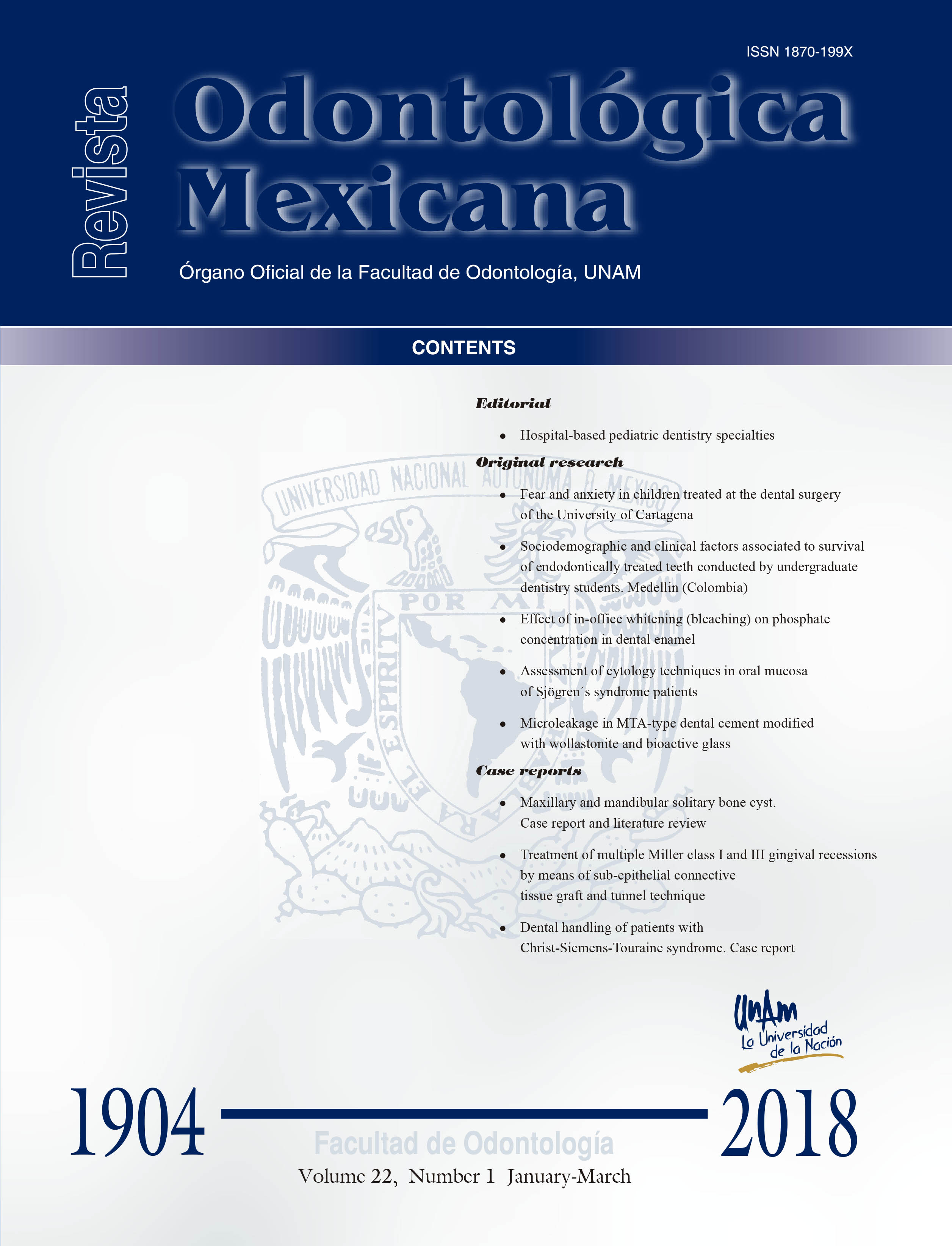Maxillary and mandibular solitary bone cyst. Case report and literature review
Contenido principal del artículo
Resumen
Solitary bone cyst is a benign lesion of unknown origin up to the present date. Its origin is mainly attribute to trauma theory, caused by intra-osseous bleeding which prevents bone repair, causing thus a cystic cavity with serous hematic content lacking epithelial lining. In most cases, the lower jaw is the most affected. It is observed in patients with ages ranging 20-30 years, generally male, it is an asymptomatic, slow-growing entity which progresses toward the cortical plates; it can cause pathological mandible fractures. Its discovery is usually incidental during a radiographic examination. It appears as a radiolucent, unilocular ormultilocular image, with well -defined borders, lacking sclerotic areas. Additional tomography and magnetic resonance studies have revealed that these cavities are not necessarily taken up by fluids: there can be presence of gas, or they could be empty. A differential diagnosis must be established to discard dentigerous cysts, ameloblastoma, keratinizing odontogenic tumor, calcifying epithelial tumor or adenomatoid odontogenic tumor.
Detalles del artículo
Cómo citar
Saldaña Sánchez, A., Gómez Pedroso Balandrano, A., Díaz Castillejos, R., & Castillo Ham, G. (2018). Maxillary and mandibular solitary bone cyst. Case report and literature review. Revista Odontológica Mexicana Órgano Oficial De La Facultad De Odontología UNAM, 22(1). Recuperado a partir de https://journals.unam.mx/index.php/rom/article/view/63580
Citas en Dimensions Service

Revista Odontológica Mexicana por Universidad Nacional Autónoma de México se distribuye bajo una Licencia Creative Commons Atribución-NoComercial-SinDerivar 4.0 Internacional.
Basada en una obra en http://revistas.unam.mx/index.php/rom.
